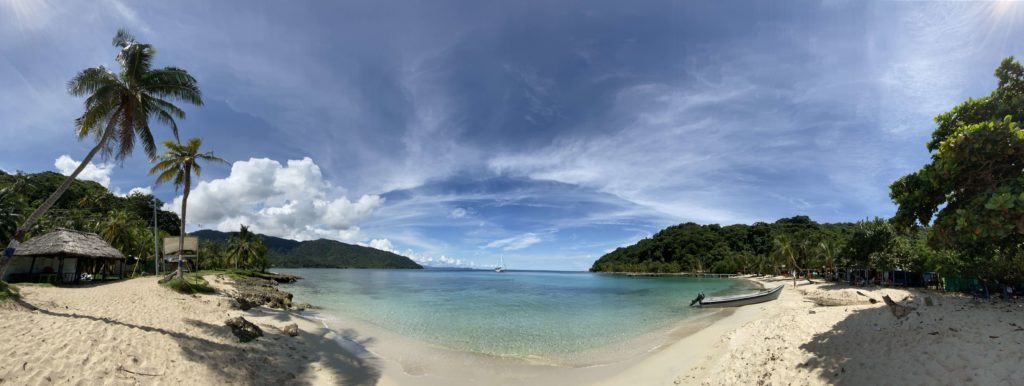The little boy next door singing a long nationalistic song about Panama and the Americas wakes me up. He is regularly interrupted and corrected by his parents, who I’m told are teachers.
This morning we are talking about cacao. Nacho grows some cacao. He’s now drying the beans. Apparently, chocolate isn’t eaten here. It’s only used for cooking, or as a chocolate drink, ChocoListo, or as incense during the chicha ceremony.
Apparently, there are cacao ceremonies all around the world, a blend of the spiritual and the hippy. They stem from Mayans and how people used cacao ritualistically. Today, these ceremonies create a safe space for sharing with chocolate. In the Cacao Temple in Reykjavik, which Maria has visited, people sing mantras and drink 100% ceremonial-grade cacao. But one can also add sweetener and spices. There is a goddess of cacao. I think when cacao is consumed in this way, it isn’t about chocolate as class or price or some kind of elitism, a la Godiva. It isn’t about finding one’s space on the spectrum between bitter and sweet. It is about being with cacao, of allowing it to effect the body. Perhaps there is a ritual kind of magic that we have forgotten, that the Nestles and Van Houtens of the world have destroyed. The goddess of cacao has many worshippers who never know her name, never give her strength. May we never forget.
For as many rules as they have in Armila, there isn’t one about noise. There’s always a kid shouting in glee somewhere, a radio going off with auto-tuned Latino pop at 5 am. The bats scurry about in the eaves, dogs chase each other around and roosters strut about going off like awkward bombs at all hours.

We take the speedboat to La Miel, the border town of Panama. It’s a pretty beach and I grab the chance to fly the drone. The batteries are already depleted (I didn’t check) and there’s less than ten minutes of flying time on each of them. On the second battery, I am too far out at sea to make it back to where I am, so I improvise and land on the jetty. Like a seaplane!
The water is warm and full of small fish and coral. It’s also very salty, but without a snorkel it is impossible to get too far. Still, the play of light on the seabed is a ripple of delight. We try a coco loco, a potent local cocktail of rum, Baileys and coconut juice for $5 USD. Lunch is plantains, coconut rice and snail curry. Incredibly delicious. The clouds are light and clear of rain, so we cross the border to Sapzurro, where ice cream and another beach await.

It is a steep, but manageable hill to climb to cross into Columbia. Apparently, a land crossing between Panama and Columbia is rare so what we are doing is quite the score. We have our passports with us but they aren’t stamped as quite a few people move back and forth every day. Or maybe the border guards can’t be bothered. We saw a few of them drinking from coconuts as we were leaving La Miel.
Sapzurro is tiny, but tourists do come here from the next sizable town, Capurgana. And I can see why. There are quite a number of hostels so it must be on the backpacking radar. The beach is in a very pretty bay and is quite chill. ‘Main Street’ has a church, drugstore, a few restaurants and the usual clump of old men shooting the breeze. We get an ice cream and sit on the beach. The girls go swimming and I take a walk around the curve of the bay, discovering another beach and some kind of local cookout. Even the sentry on duty in full army uniform and rifle gets a plate. Columbia doesn’t seem all too different from Panama, but still, it’s really pretty amazing to cross geographically from Central to South America overland.
The boat picks us up in Sapzurro and we wing our way home through steady rain to Armila. A long but satisfying day.





